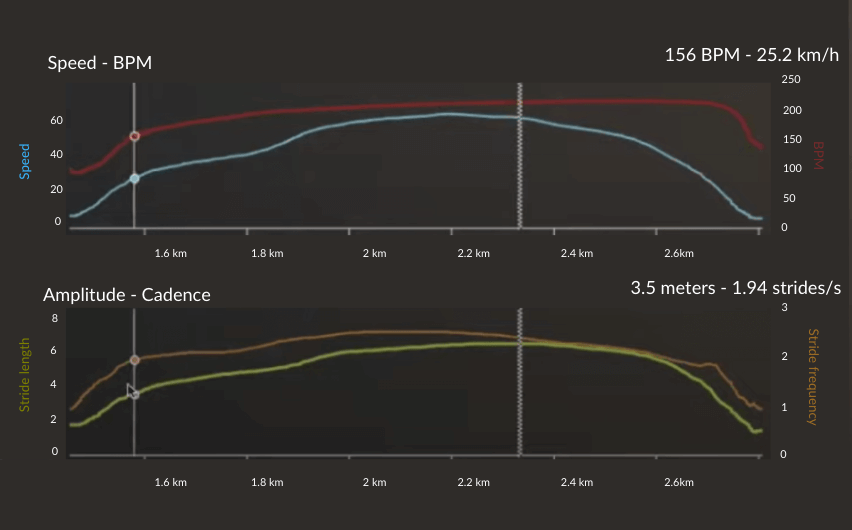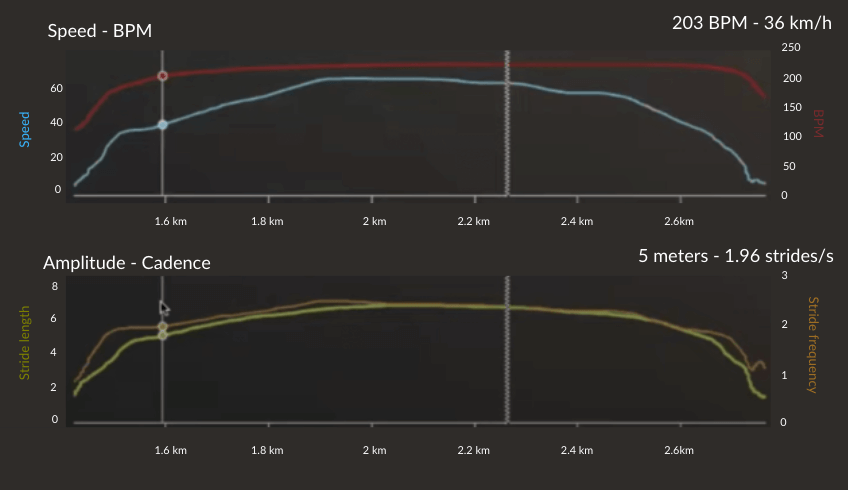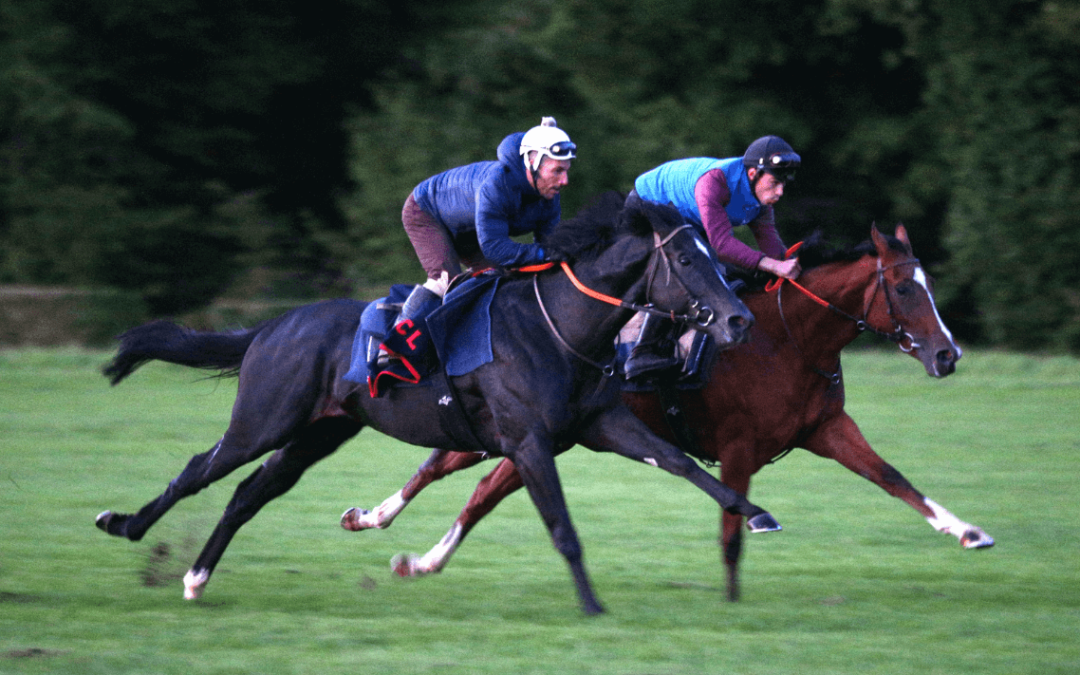Knowing your young horses’ locomotor profile and natural acceleration strategy is the first step in detecting future champions. Indeed, the innate locomotion characteristics of your horses can tell you about their strengths and weaknesses early enough to know which path to take in their training. Data allows, among other things, to get this kind of information.
1. How works at sub-maximal effort can also tell you something about your horses’ stride profile and ability?
Working at sub-maximal speed, i.e. between 57 and 60 km/h, can be very interesting. To do this work properly, it is important to know the maximum heart rate of your horses.
How do your horses generate their speed during a submaximal effort?
Example – Data comparison during a submaximal effort
Let’s take the example of Arion I, a horse that did a fairly standard job in mid-March. Through the data, we observe that:
- He spent 10% of the training in the anaerobic phase
- His heart rate does not exceed 200 BPM
- His speed does not exceed 57 km/h
We can estimate that this training is a sub-maximal exercise according to the data. It is then interesting to look at his stride frequency and stride length to learn more about his locomotor strategy.

Data from the EQUIMETRE platform

Data from the EQUIMETRE platform
We can see that the horse starts by increasing his stride frequency (orange line) to generate speed. Once he reaches 20 km/h, he could logically have extended his stride length to continue generating speed, but we see that this is not the case. Arion I uses his stride frequency along the entire line to generate speed.
Arion II performed the same exercise with the same intensity. Let’s analyze his locomotion data.

Data from the EQUIMETRE platform
Arion II uses his stride frequency to initiate his acceleration. However, once he has produced speed, he stabilizes his stride frequency and increases his stride length. Thus, stride frequency and stride length go hand in hand with speed. From this, we can say that this horse is biomechanically efficient.
Arion I primarily uses his stride frequency to create speed, which requires a lot of oxygen. In contrast, Arion II finds a better balance between stride frequency and stride length to accelerate: this strategy allows him to hold the effort longer and maintain the gallop at that speed more easily. Indeed, we can see that even though both horses have reached the same maximum speed, Arion II holds this speed longer at a speed of 55km/h.
By analyzing data from a 80% sub-maximal effort, it is therefore possible to thoroughly evaluate your horses’ natural locomotor strategy. When we look at these graphs, we don’t see the difference in terms of physical condition: it may be the same, but some are able to maintain speed at sub-maximal heart rate level much more easily than others.
2. How early is it possible to detect innate stride length and stride frequency characteristics?
At the beginning of training, young horses generally have more of a sprinter’s locomotor profile. Stride frequency is indeed more innate and mechanical. It is determined from the horse’s birth as it is linked to breathing. Moreover, horses experience stride frequency from a very young age in the paddock. However, it is possible to detect their future locomotor profiles quite early. The more the horse starts to develop and train at high speeds, the more he learns to put his feet down and the more his stride length changes.
When working at 45 to 55 km/h, it is possible to analyze how the horse generates his speed. It appears that a horse that exceeds 2.25 strides per second during low intensity training tends to become a sprinter. Similarly, a horse with a stride length of more than 5.5 meters is more likely to become a miler in the future.
Example – Arion III
Arion III was monitored in February, March and April. His data are quite constant. As early as February it was possible to get an idea of his locomotor profile. Indeed, with a stride length of 5.22 meters per second and a stride frequency of 2.39 strides per second at 45km/h, he showed a sprinter profile.

Data from the EQUIMETRE platform
This horse is now a good racehorse, with a stride of 6.8 meters at full speed and always a great stride frequency.
It can be interesting to train horses with similar locomotor profiles together. Indeed, the jockeys will be more likely to ask them for exercises they are capable of, and the comparison between horses will be more relevant.
Keywords: young horses’ locomotor profile, stride frequency, stride length, speed



